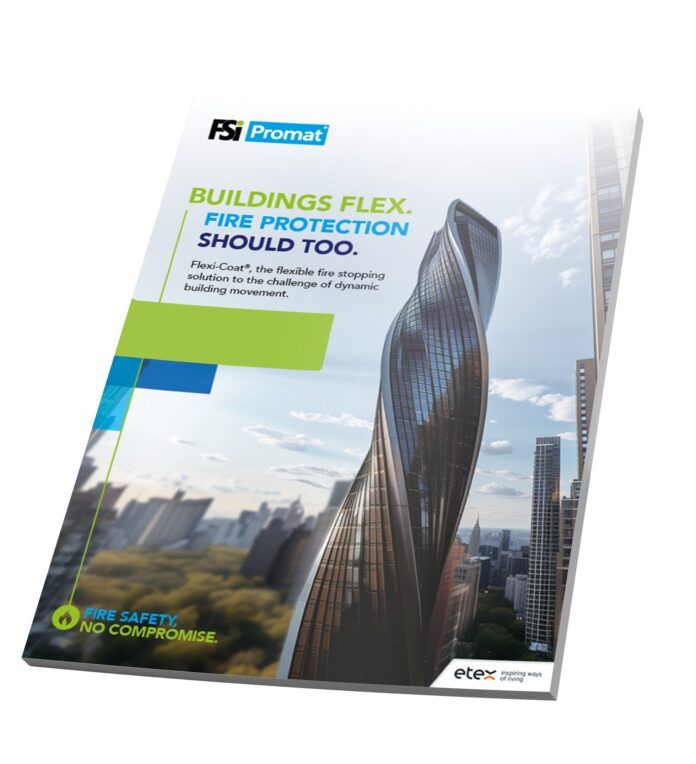FSi Promat has launched a new white paper highlighting the impact dynamic movement can have on the effectiveness of penetration seals and what can be done to ensure passive fire protection remains compliant for the lifetime of a building.
The new white paper, ‘Managing Movement: Accommodating dynamic movement in fire stopping for penetration seals’ takes an in-depth look at the impact of movement on fire stopping, existing legislation and guidance around the issue, and how FSi Promat has engineered a solution.
The stress that movement can put on a building can cause breaches, tears and cracks in the construction materials, including in fire stopping that has been used to reinstate the compartment to contain the spread of flames, smoke, heat and toxic gases.
Approved Document B (fire safety) states the need for an “appropriate fire seal” that will last for the lifetime of the building. But with no formal testing mechanism under the EN1366-3 standard or European Technical Assessment (ETA) specifically for movement within penetration seals, this element often falls out of the scope of building design.
Craig Abbott, technical director at FSi Promat, explained: “Service penetrations are part and parcel of construction and must be accommodated within passive fire protection utilising appropriate fire stopping systems. However, where movement is present in a building it is essential that sufficient flexibility is built into this system to mitigate the effects of dynamic movement on the performance of the penetration seal.
“We always encourage early engagement with manufacturers to identify how to tackle issues such as movement as effectively as possible – and ensure lifetime compliance. The white paper details the work we have undertaken to successfully demonstrate how movement of +/- 25 per cent can be accommodated with the right fire stopping solution.”




